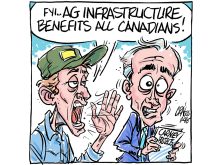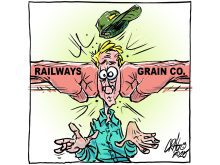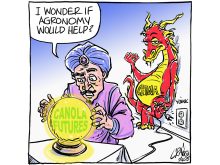Canadian agriculture has some of the most climate-friendly practices on the planet, yet our producers struggle to succeed under an international trade regime that doesn’t reward this success.
As a relatively small nation with a heavy reliance on export trade, Canadian farmers benefit more than most from assured market access within a disciplined trading environment.
However, as global leaders meet in Dubai this week for their 28th conference dedicated to limiting human-induced global warming, there are growing concerns that trade policy could be used to block progress rather than enhance it.
Read Also

Kochia has become a significant problem for Prairie farmers
As you travel through southern Saskatchewan and Alberta, particularly in areas challenged by dry growing conditions, the magnitude of the kochia problem is easy to see.
Farm leaders in the Cairns Group, which represents 19 agricultural exporting nations, have released a statement calling on world leaders to recognize “the role of international agricultural trade, innovation, and technology has in achieving climate and food security ambitions through building value chains that lead to more efficient use of resources globally.
“Policies to promote sustainable agri-food systems should not be designed or used for protectionist purposes.”
The Canadian Agricultural Policy Institute gave credence to these concerns in a recently released white paper outlining the challenges facing the Canadian livestock sector.
“If the objective were to minimize global GHG emissions, Canada would be one of the preferred producers and net exporters, and higher emitting countries would import animal products from Canada to meet their demands and reduce their own production in animal industries. This is not occurring…” the report says.
“Both pork and beef have suffered from the erosion of rules-based trade and gaps in bilateral trade agreements,” it says.
At a time when demand for animal protein is growing, the Canadian livestock sector is stagnating rather than leveraging its comparative advantage as a producer with relatively low emissions intensities.
The CAPI report notes the North American beef production system releases less than one-third the emissions per kilogram of protein relative to beef produced in South America. Our pork has an emissions intensity scale that is three-quarters that of the global average.
Yet due to a host of factors, the national cow herd has shrunk from 4.8 million to 3.5 million since 2008. The national sow herd has declined over the same period, now sitting at around 1.2 million, down from 1.4 million.
When it comes to emissions, animal agriculture is lumped into Canada’s national emissions reduction agenda, and expected to come up with reductions accordingly.
Reducing or even eliminating animal agriculture in Canada would achieve only small gains toward Canada’s overall emissions reduction targets. Yet Canada’s withdrawal from global exports would increase demand for beef from exporters that generate much higher emissions.
Factor in the likelihood that more Prairie forage and grasslands would be converted to cropland, which reduces biodiversity and releases carbon, and the net effect could be negative.
CAPI makes a valid point when it calls on the Canadian government to aggressively promote rules-based trade and support enforcement of those agreements. It also needs to do more to support the preservation of grasslands, perhaps by putting a price on ecosystem services.
But beyond that, CAPI says this country must push for changes to how emissions reduction targets are measured, moving from a whole-of-economy approach to one that incorporates food security priorities into the climate change agenda.
It’s important, not only for the future of the Canadian agriculture, but for the sake of the planet.
Karen Briere, Bruce Dyck, Barb Glen, Michael Robin, Robin Booker and Laura Rance collaborate in the writing of Western Producer editorials.

















